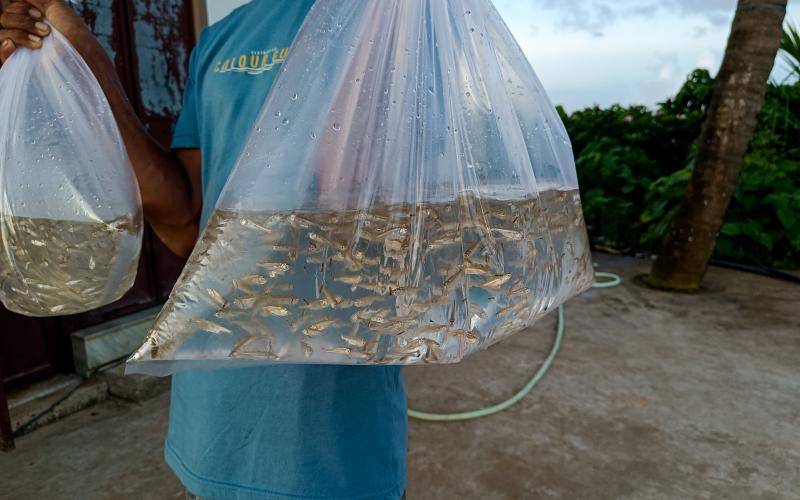
- Under the Taking Nutrition-Sensitive Carp-SIS Polyculture Technology to Scale project, WorldFish successfully developed a simple and replicable technique for mass-producing mola seeds, which has enormous promise for promoting nutrition-sensitive aquaculture in South Asia.
- From the project’s partner hatchery, hatchlings were made available for sale to farmers, and rapid availability of mola seed is catalyzing the adoption of nutrition-sensitive carp-mola polyculture in Odisha.
- With an average annual mola consumption of 16 kg per household and significant earnings from sales, mola cultivation is beneficial both nutritionally and economically, underlining its importance in addressing food and nutrition security challenges and enhancing livelihoods.
Mola as Champion Species
Undernutrition remains a pressing issue in developing countries, particularly impacting the health of women and children. Persistent micronutrient deficiencies necessitate effective interventions. In response, initiatives promoting Small Indigenous Fish Species (SIS) from freshwater ecosystems have gained momentum. Among these, the integration of mola (Amblypharyngodon mola) into conventional carp polyculture systems emerges as a promising strategy to combat nutritional deficiencies.
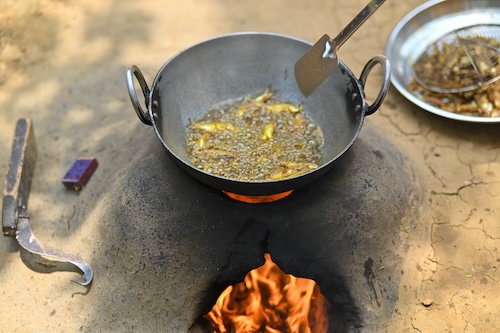
The Story Unfolds
In the Indian state of Odisha, WorldFish, with funding from the German Federal Ministry for Economic Cooperation and Development (BMZ), implemented a project to upscale nutrition-sensitive carp-SIS polyculture. A pivotal breakthrough in 2022 marked the development of a first-ever protocol for hatchery-based induced breeding and mass seed production of mola. This marked the beginning of a transformative journey towards enhancing dietary diversity and micronutrient intake among fish-dependent populations.
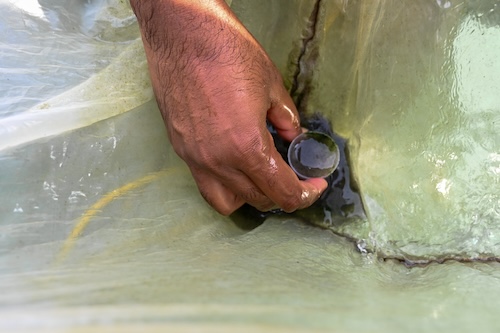
Implementation and Impact
From the project’s partner hatchery, hatchlings were made available for sale within 3 to 4 days of hatching, and a successful nursery-rearing protocol for raising spawn to fry was established. Rapid availability of hatchlings, successful nursery-rearing protocols, and demand for hatchery-produced mola seed demonstrate the potential of mola in promoting nutrition-sensitive aquaculture. The project’s partner hatcheries either sold or distributed mola spawn and fry to carp farmers regularly. A comprehensive follow-up in 2023 provided crucial insights into the potential of hatchery-produced mola seed in promoting nutrition-sensitive aquaculture in Odisha.
The study showed that mola contributes significantly to household food and nutrition security and income, with successful production achieved within 3 to 5 months of seed stocking. With an average production of 194 kg/ha from small household ponds, mola contributed up to 26% to total fish production.
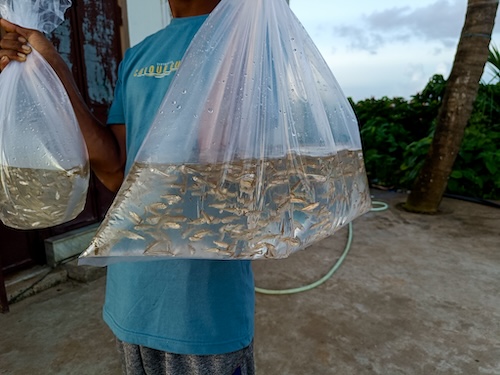
Nutritional and Economic Benefits
Households value mola for consumption and additional income. Each household consumed an average of 16 kg of nutrient-rich mola annually, contributing 3 kg/ to per capita mola consumption. On average, farmers earned an additional INR 19,681 per hectare from mola sales, translating to INR 7,354 per household as extra income.
Factors Influencing Productivity
Various factors influenced mola productivity and household consumption. Pond size exhibited a significant positive correlation with mola production, income, and consumption, highlighting the importance of scaling up pond size for optimal results. Increased stock density positively impacted sales and production per hectare, emphasizing the need for strategic stocking practices. Culture duration also played a crucial role in household-level consumption, indicating the importance of a prolonged presence of mola in the pond for frequent harvesting.
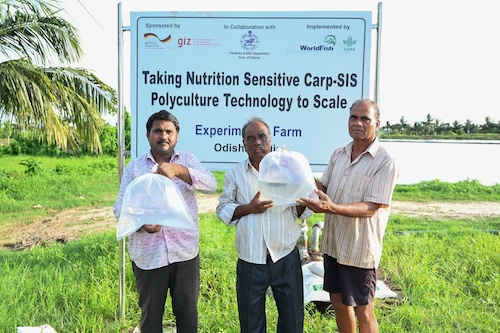
Future Prospects
The successful implementation of hatchery-based mola seed production technology presents a promising avenue for scaling up nutrition-sensitive aquaculture in Odisha. This success story not only addresses food insecurity but also underscores the importance of sustainable aquaculture practices in enhancing livelihoods and promoting nutrition. Further research and implementation efforts are essential for realizing the full benefits of mola in addressing food and nutrition security challenges.
